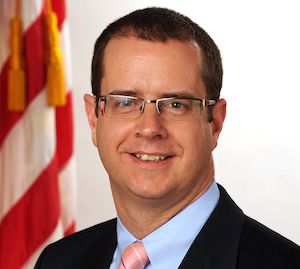- Center on Health Equity & Access
- Clinical
- Health Care Cost
- Health Care Delivery
- Insurance
- Policy
- Technology
- Value-Based Care
Americans Used Less Care in 2016 but Healthcare Costs Still Soared, Report Says
Rising prices, especially for prescription drugs, surgery, and emergency department visits, caused overall healthcare spending in 2016 to grow faster than at any time in the last 5 years; however, Americans used the same amount or less healthcare in 2016 compared with 2015, according to a report by the Health Care Cost Institute.
Rising prices, especially for prescription drugs, surgery, and emergency department (ED) visits, caused overall healthcare spending in 2016 to grow faster than at any time in the last 5 years, according to the Health Care Cost Institute (HCCI). However, Americans used the same amount or less healthcare in 2016 compared with 2015, according to the HCCI’s annual Health Care Cost and Utilization Report, which analyzed healthcare spending and utilization from 2012 to 2016 for people up to age 65 with employer-sponsored health insurance.
Four major health insurers contributed data to HCCI for the purposes of producing a national, multi-payer, commercial healthcare claims database: Aetna, Humana, Kaiser Permanente, and UnitedHealthcare.

Niall Brennan, MPP
“It is time to have a national conversation on the role of price increases in the growth of healthcare spending,” Niall Brennan, MPP, president of HCCI, said in a statement. “Despite the progress made in recent years on value-based care, the reality is that working Americans are using less care but paying more for it every year. Rising prices, especially for prescription drugs, surgery, and emergency department visits, have been primary drivers of faster growth in recent years.
Prescription drug spending had cumulative growth of 27%, despite a flat or decreasing trend in generic drug prices and despite a fall in utilization of brand prescription drugs. During the study period, the price of brand prescription drugs soared by double digits, which drove drug spending higher.
Three classes of drugs were behind the rise in prescription drug spending, the report found:
- Skin and mucous membrane agents, which had a 79% spending increase
- Hormones and synthetic substitutes, which had a 55% spending increase
- Anti-infective agents, which had a 52% spending increase. Hepatitis C antivirals, introduced during the study period, sent costs soaring.
While the number of ED visits rose just slightly, the average price per visit grew steadily over the 5-year study for a 31.5% cumulative increase, driving the increase in outpatient spending.
The average price of surgery rose as well, pushing up spending for both inpatient and outpatient care. The average price for surgical admissions increased by nearly $10,000 or 30%, despite a -16% cumulative decline in utilization. The price for outpatient surgery rose more than 19%.
The study also reported:
- Total spending on primary care office visits fell by almost 6% due to a dropoff in the number of visits. This was offset by a 31% spending increase on office visits to specialists and a 23% increase in visits for preventive care, changes that could be partly attributable to changes in billing practices or a possible switch where patients sought care from a specialist instead of a primary care provider.
- Direct out-of-pocket (OOP) spending by patients increased every year, but at a slower rate than total healthcare spending, due to a decline in the amount consumers paid OOP for prescriptions. OOP spending on brand prescriptions fell by 26% per person and accounted for 91% of the total decline in prescription drug OOP spending. OOP spending growth for inpatient, outpatient, and professional services outpaced total spending growth on those service categories. OOP spending increased 29% for outpatient services—notably faster growth than the 17% increase in total outpatient spending. OOP spending on professional services increased 16%, compared with 11% growth in total spending.
- Prices for professional services, fees paid to doctors, surgeons, and other clinicians, saw the lowest growth and generally the lowest prices overall. This held true across primary and specialty care, except for surgery.
“While consumers, especially those with employer-sponsored insurance, may not feel the direct impact of these charges via OOP payments, they ultimately pay through increased premiums and decreased benefits,” said Brennan.
HCCI is an independent, nonpartisan research organization that analyzes the causes of the rise in health spending.
